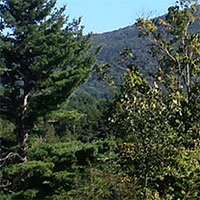New Haven
Natural Communities
Written by Emma Stuhl
Have you ever noticed how blueberries grow in places with similar characteristics? Most organisms have biological preferences, needs, and competitive abilities that shape where they are able to survive and thrive. Scientists call groupings of plants, animals, and other organisms that occur repeatedly in certain physical environments “natural communities.” Armed with a bit of know-how, you can head out into wild landscapes and predict some of what you will find based on soil type, water, climate, and more.While much of the land in New Haven is used for agriculture or homes, New Haven is still home to several significant natural communities, including the rare Clayplain Forest. Clayplain Forests grow in the dense, clay soils that developed from the sediments that settled out of glacial Lake Vermont. The watertable is often high in these forests, so the trees’ roots tend to be shallow. As a result, wind storms easily blow trees over, and leave toppled trees scattered throughout the forest. When people comment on the Champlain Valley’s fertile agricultural land, they are often referring to these clayplain soils. Since this land is so productive, it is now mostly used for agriculture and the Clayplain Forest natural community which grows on these soils is extremely rare.
There are several scattered wetlands in New Haven, such as the Red Maple-Northern White Cedar Swamp, a natural community that occurs over calcareous bedrock in Vermont. These swamps flood seasonally, and stay wet year round. Similar to the wet soils of the Clayplain Forest, the wind frequently blows over the shallow-rooted trees. This creates small hummocks and hollows. Some residents of New Haven recall stories of how every land owner in town was also given a piece of distant swamp land where they could harvest the rot-resistant cedars to build fences.
The undeveloped areas in town provide important ecosystem services to the surrounding areas. From supporting pollinators, to cleaning water and mitigating floods, the vegetation of New Haven supports the lives of all town residents.
